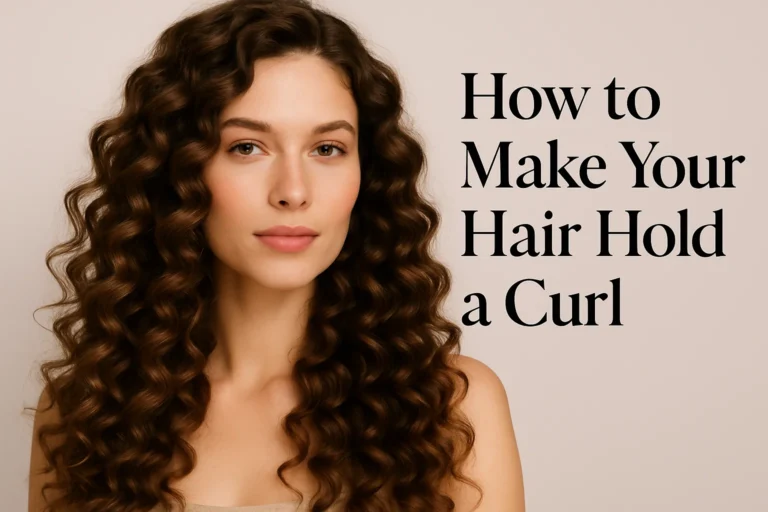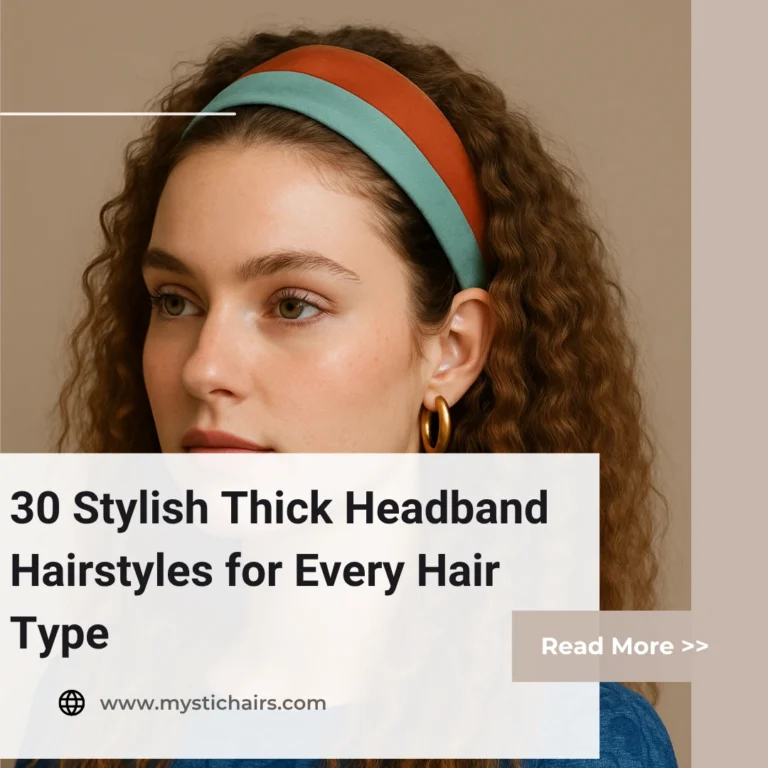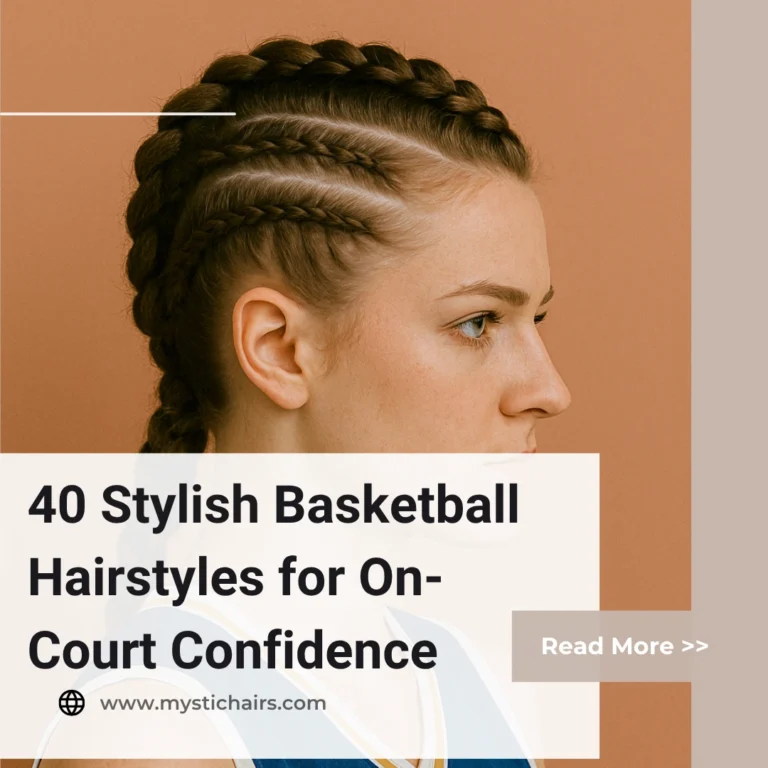15 Expert Tips for Detangling Curly Hair Without Breakage
Tips for detangling curly hair are essential for anyone managing natural texture, coils, or waves. Curly hair is naturally more prone to tangles due to its spiral shape, which makes it easier for strands to wrap around each other. Unlike straight hair, curls require a more patient and gentle approach to detangling, or you risk unwanted breakage, split ends, and even hair loss. Thankfully, with the right methods and tools, detangling can become a smooth part of your curly hair routine.
Many people with curls experience pain, frustration, and damage when trying to detangle, especially if they’re not using curly hair-friendly techniques.
Tips for Detangling Curly Hair
This guide shares 15 expert-approved tips to make the process easier, faster, and healthier. Whether you have type 2 waves, type 3 curls, or type 4 coils, these detangling techniques for curly hair will help you manage knots, retain length, and enjoy soft, bouncy curls with minimal stress.
1. Start with Soaking Wet Hair
The first and most important rule in any list of tips for detangling curly hair is to never detangle while dry. Dry detangling can cause massive breakage and frizz. Always detangle your hair when it’s soaking wet and coated with conditioner. This softens the cuticle, increases elasticity, and makes knots easier to glide through.
Water allows curls to clump together and stay hydrated, preventing excessive pulling and snapping. If you’re doing a pre-poo treatment, even then, make sure to mist the hair with water first. Remember, hydrated hair is happy hair, especially when it comes to detangling curls.
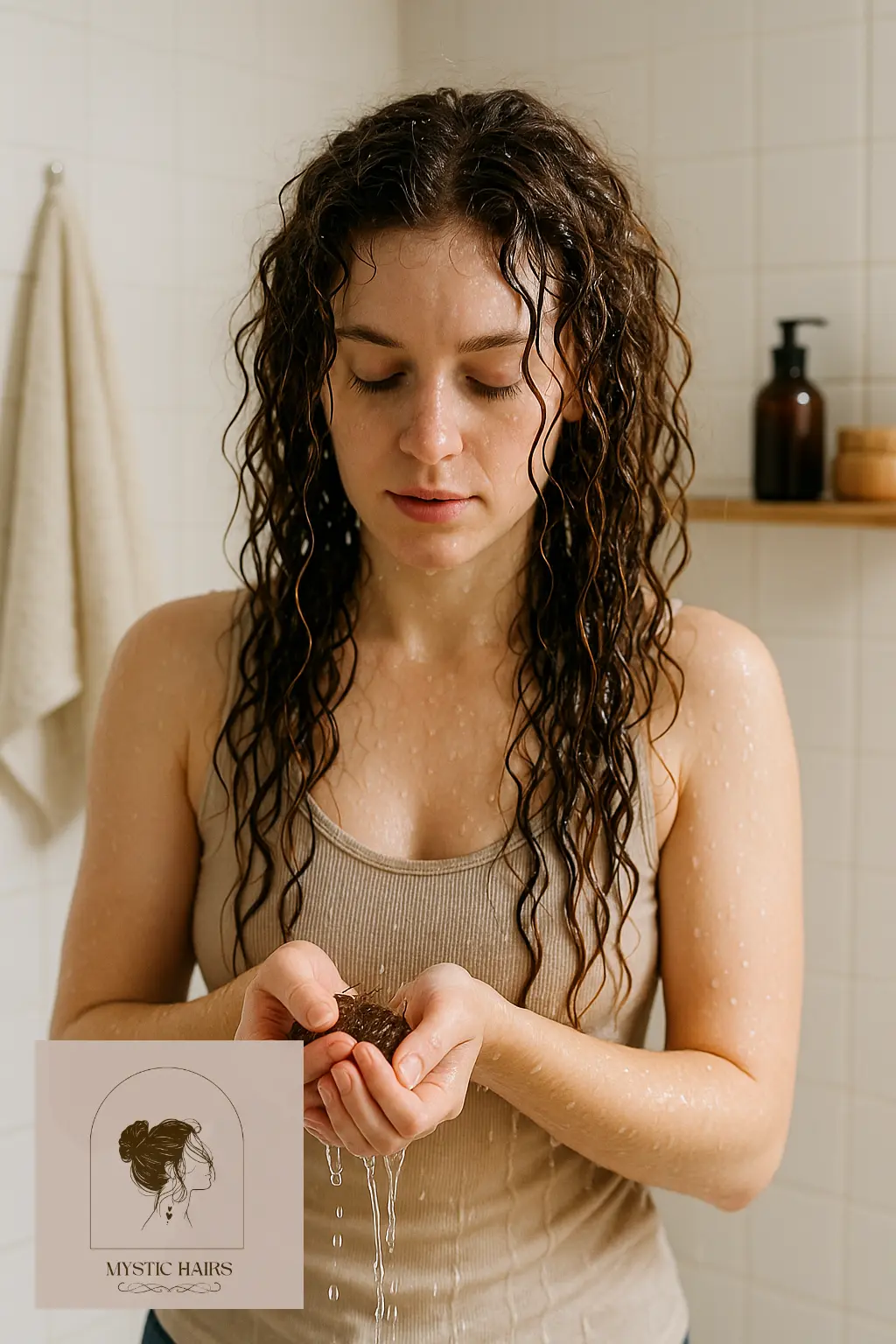
2. Use a Slippery Conditioner or Detangling Product
The best curly hair detangling routine starts with a conditioner that gives you plenty of slip. Slip refers to how easily your fingers or a comb can glide through your strands. Choose a silicone-free, curl-friendly conditioner or detangling cream specifically made for textured hair.
Work it through the hair in sections and let it sit for a few minutes before detangling. This softens knots and makes the process much smoother. Look for ingredients like aloe vera, marshmallow root, and coconut oil, which are known for enhancing slip and moisture retention in natural curly hair.
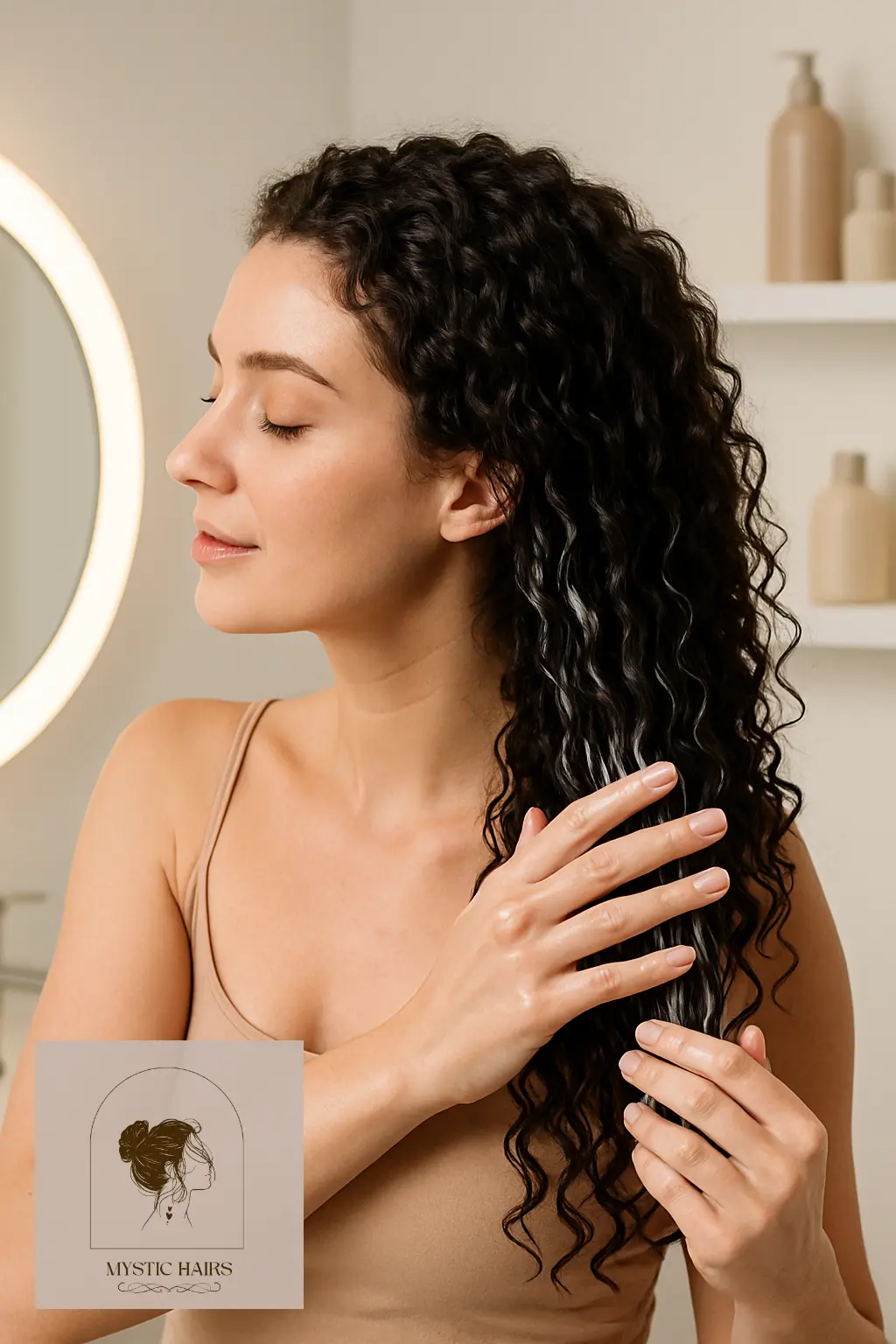
3. Section Your Hair Before Detangling
Trying to detangle your whole head at once can be overwhelming and damaging. Instead, part your hair into 4–8 sections using clips. Working section by section gives you more control and prevents you from yanking your strands unnecessarily.
This method is particularly helpful for thick curly hair detangling because it ensures even distribution of product and reduces re-tangling as you go. Secure each section after detangling to keep it neat and prevent it from tangling again before styling or rinsing.

Frequent tangles can put extra strain on fragile strands, leading to shedding and breakage. Learning how to stop thinning hair in women ensures your detangling routine also protects thickness and long-term hair health.
4. Use a Wide-Tooth Comb or Fingers
Your detangling tool matters just as much as your technique. A wide-tooth comb for curly hair is a must-have because it gently separates strands without pulling or breaking curls. For even more care, use your fingers first to feel for knots and work them out slowly.
Finger detangling gives you the most control and allows you to identify snags without ripping through your hair. Start from the ends and move upward, slowly working your way to the roots—never the other way around. This keeps tension off the scalp and minimizes unnecessary stress on your strands.
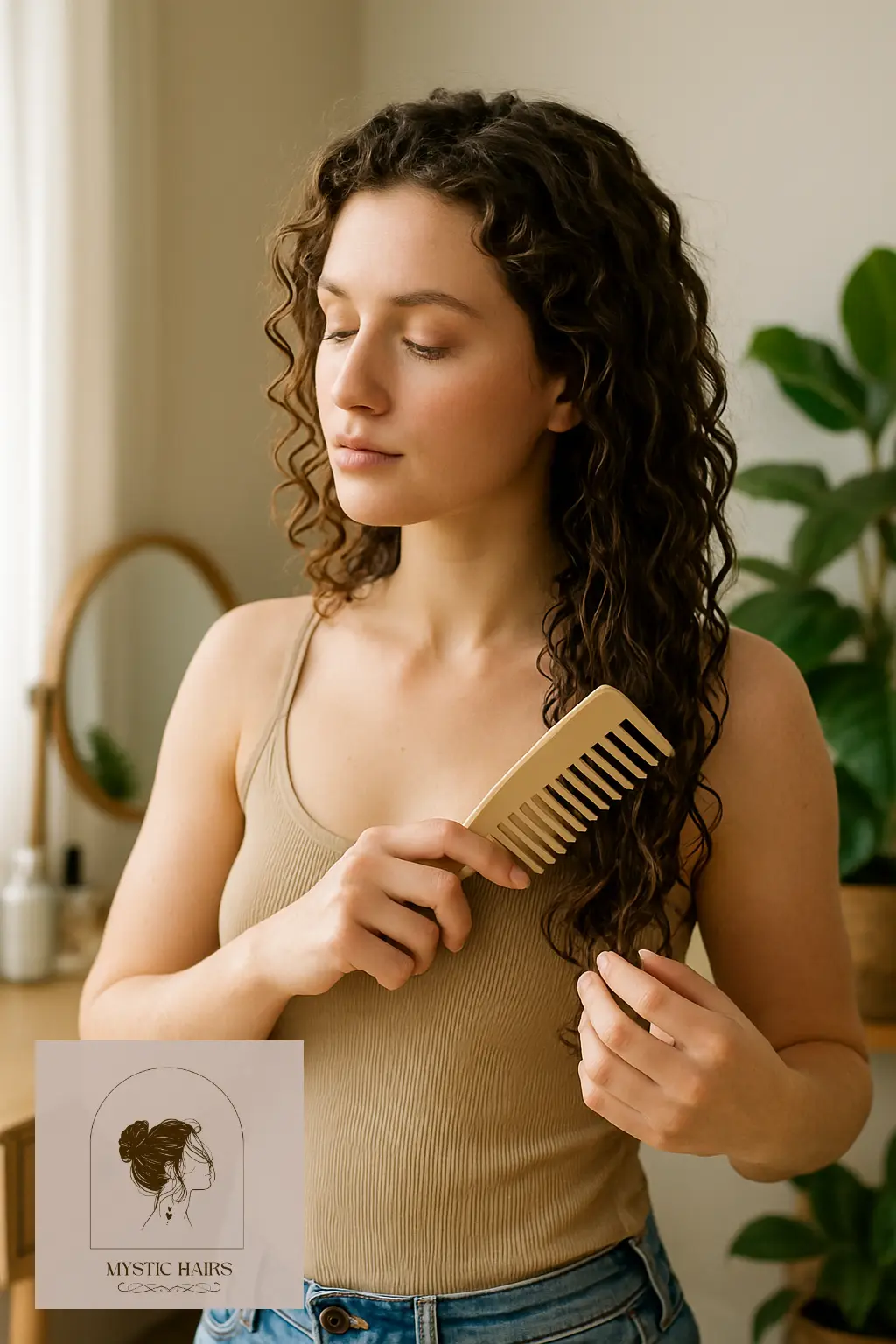
5. Be Gentle and Take Your Time
Curly hair requires patience. If you’re in a rush, detangling will likely lead to breakage, pain, and regret. One of the most overlooked but critical tips for detangling curly hair is to slow down. Gently separate the strands and loosen knots without forcing them apart.
If you hit a stubborn tangle, pause and apply more water or conditioner before trying again. Force never wins when it comes to curls. Treat detangling as a form of self-care, not a chore. The more gently you treat your curls, the healthier and more defined they’ll become over time.
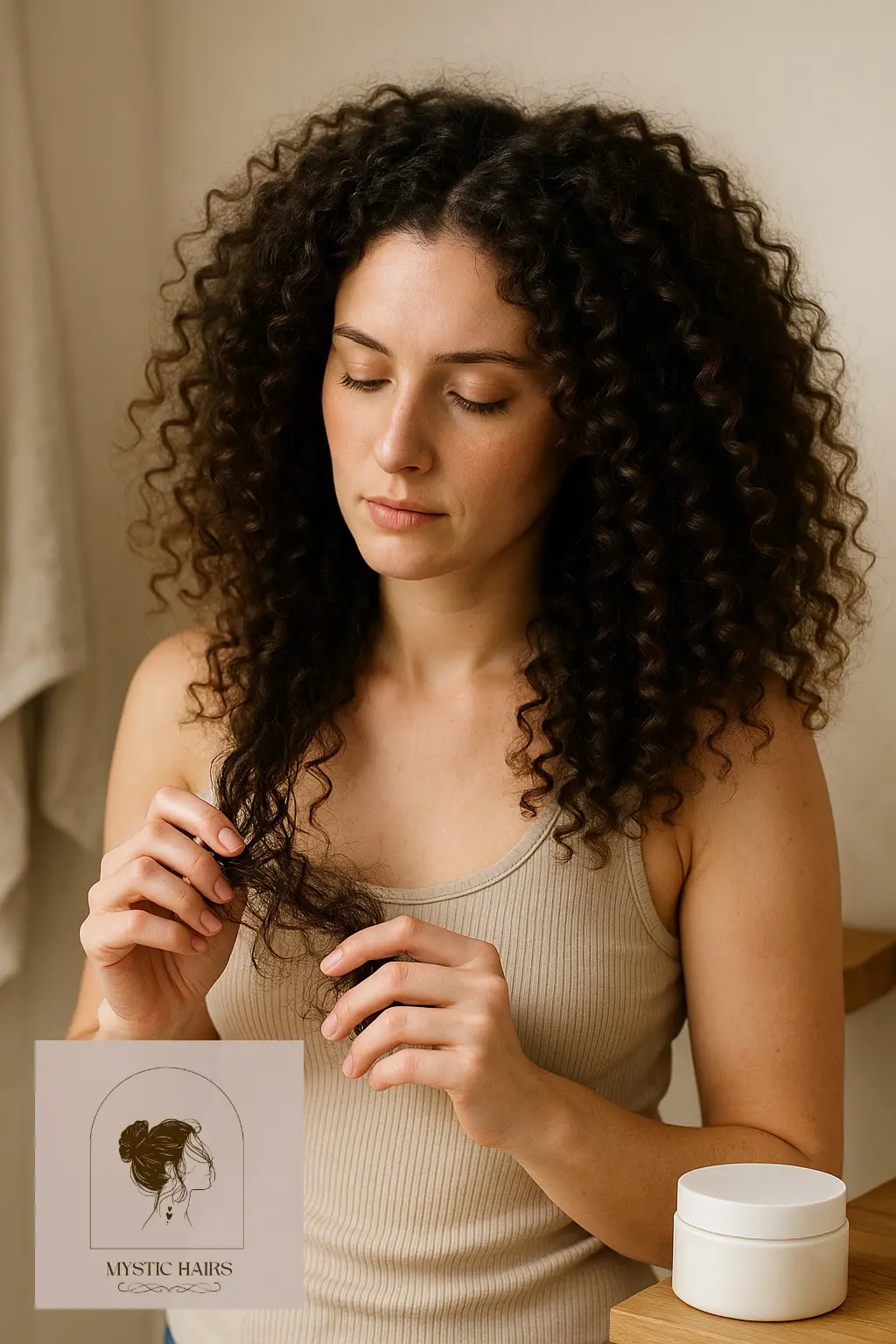
6. Use a Wide-Tooth Comb on Wet Hair Only
A wide-tooth comb is a curly-haired person’s best friend when it comes to gentle detangling. Always detangle wet or damp hair, as dry combing can cause unnecessary breakage and frizz. When your curls are soaked and conditioned, they become more pliable and easier to separate without damaging the strands. Glide the comb gently from the tips upward, never yanking through knots. This minimizes stress on your hair and scalp, preserving your curl pattern and length over time.
Combing wet hair with a wide-tooth comb also helps distribute moisture evenly, ensuring that your curly hair stays hydrated and frizz-free. Make sure your hair has enough slip—whether from a rinse-out conditioner or detangling mist—so that the comb glides smoothly. Remember, detangling curly hair is all about being patient and methodical, not rushing through the process.
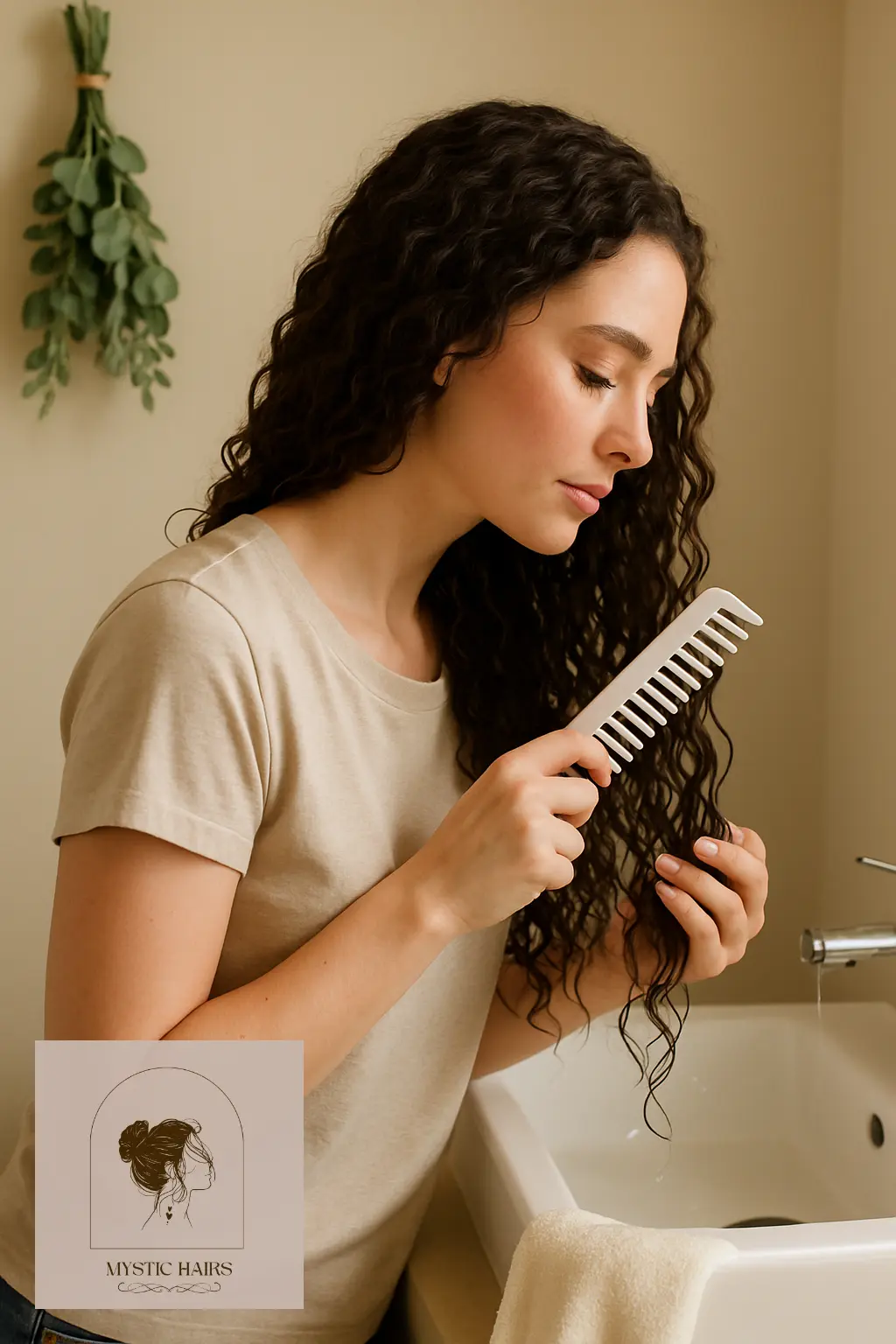
7. Detangle in Small Sections for Best Results
Trying to detangle all your curls at once can be overwhelming and damaging. Instead, section your hair into smaller parts—four to eight sections depending on your thickness—and focus on one at a time. This not only makes the process more manageable but also ensures you give attention to every tangle and knot. Working in sections allows you to be more thorough and helps prevent re-tangling areas you’ve already smoothed.
Using section clips or hair ties can help keep the detangled sections separate from the rest of your curls. This method is especially helpful for women with tight coils or thick curly hair, as it gives you control and reduces frustration. Incorporating this tip into your routine will dramatically improve the way you detangle curly hair—making it smoother, faster, and far less damaging.
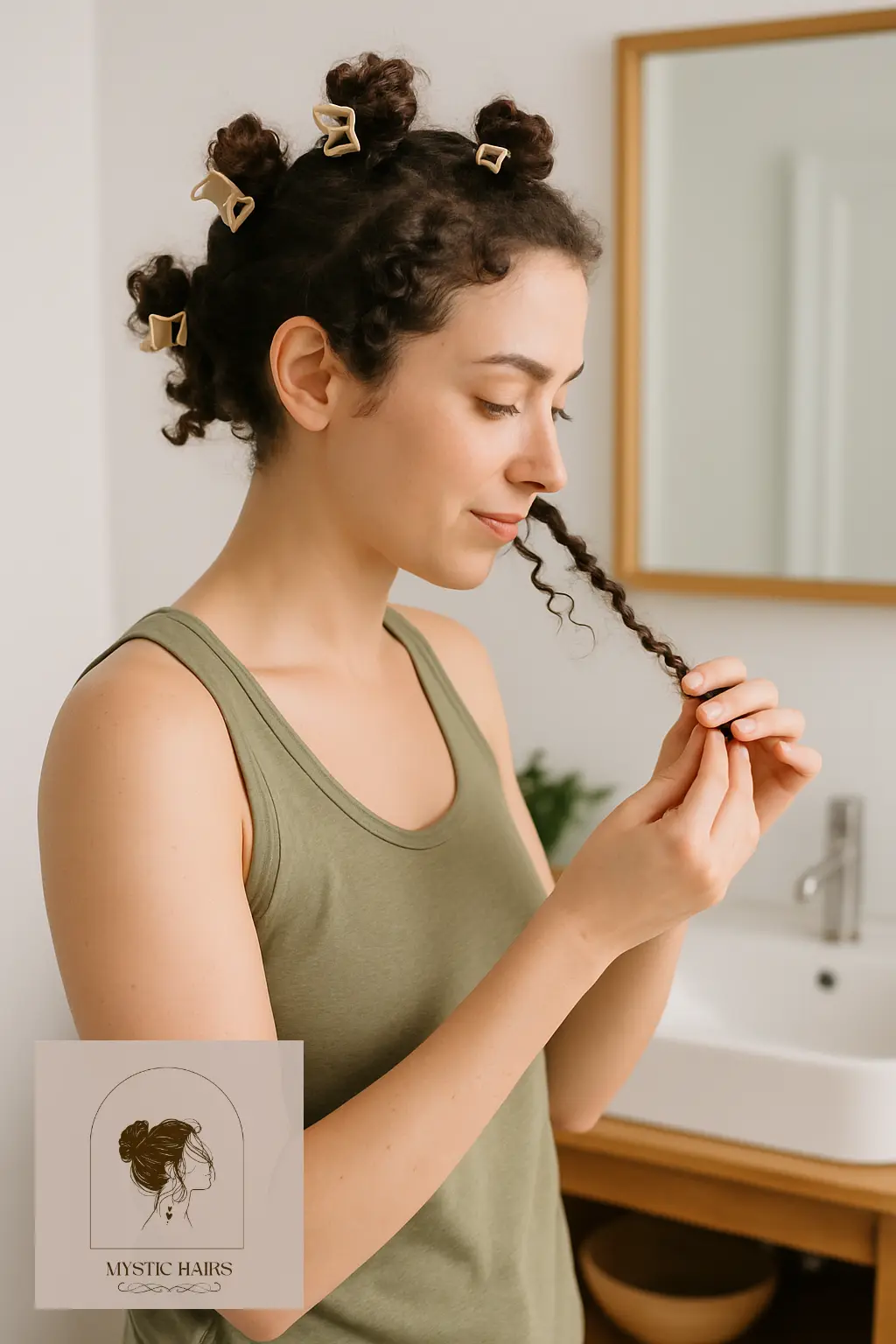
Detangling becomes much easier when hair feels smooth and manageable. Using natural methods to make your hair softer gives curls the slip they need, reducing knots and minimizing stress on strands.
8. Detangle from Ends to Roots
Many people mistakenly begin detangling from the scalp down, but this can actually worsen tangles and cause breakage. The proper method is to start detangling at the ends of your hair, gently working your way up to the roots. This technique reduces the chance of pushing knots further down the hair shaft and makes for a much smoother detangling experience overall.
When you’re dealing with curly or coily textures, the strands naturally coil and loop around each other, creating tangles primarily at the ends. By starting from the tips, you gradually loosen the knots without pulling on your roots or breaking your strands. This is one of the most essential tips for detangling curly hair—and once adopted, it can greatly reduce hair damage and increase overall length retention.
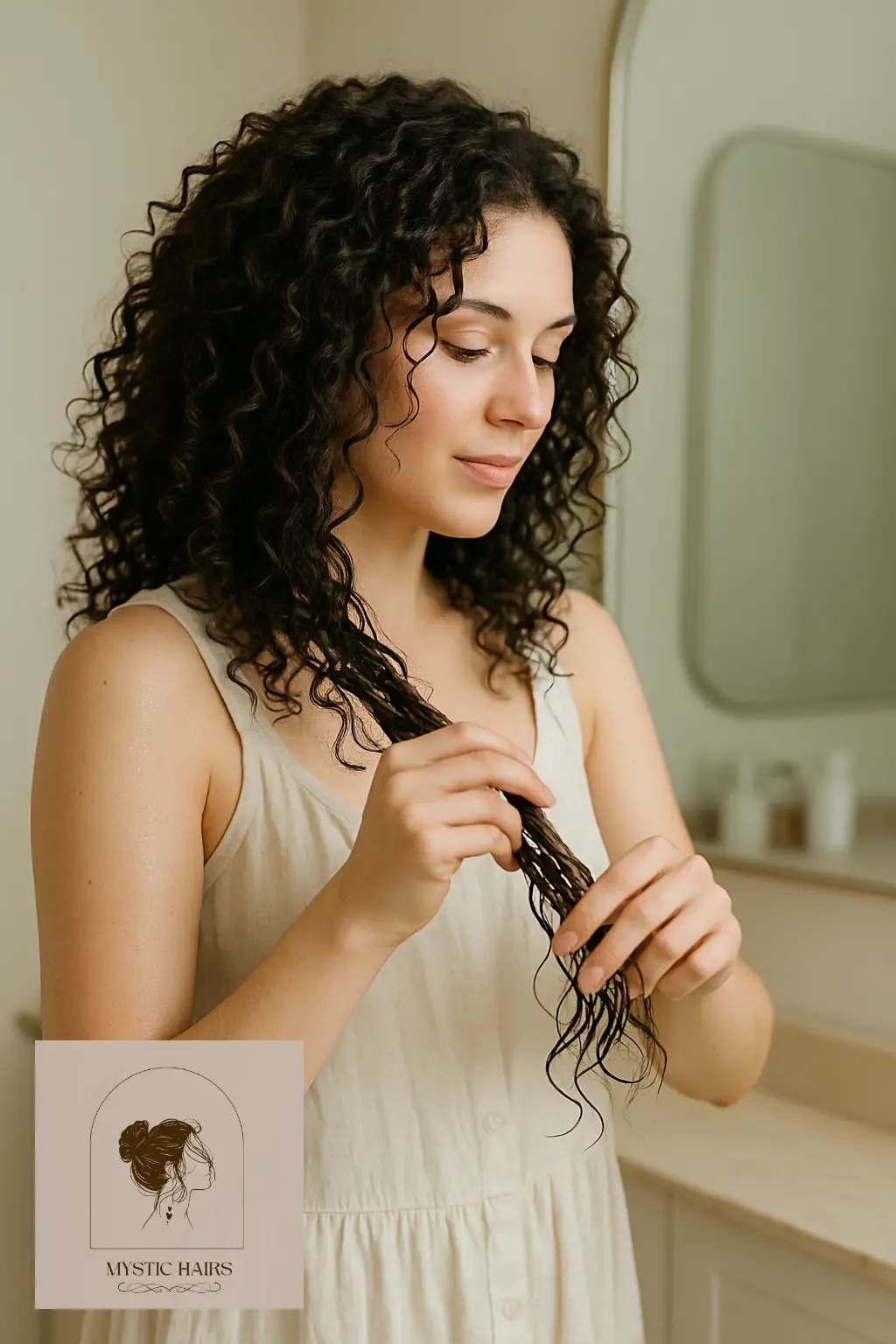
9. Reapply Moisture As Needed During the Process
As you move through each section, your hair can begin to dry—especially if it’s thick or high-porosity. To maintain slip and avoid breakage, don’t hesitate to reapply water or a moisturizing detangler. The key to safely working through knots is keeping your hair adequately lubricated so that your comb or fingers glide through without snagging.
Keeping a spray bottle filled with water nearby can be a game-changer during your detangling routine. Lightly mist each section before combing if it starts to dry out. This small step helps reinforce your hair’s elasticity and prevents snapping. Hydration is foundational to healthy curls, and maintaining it throughout the detangling process ensures you’re doing it with care and intention.
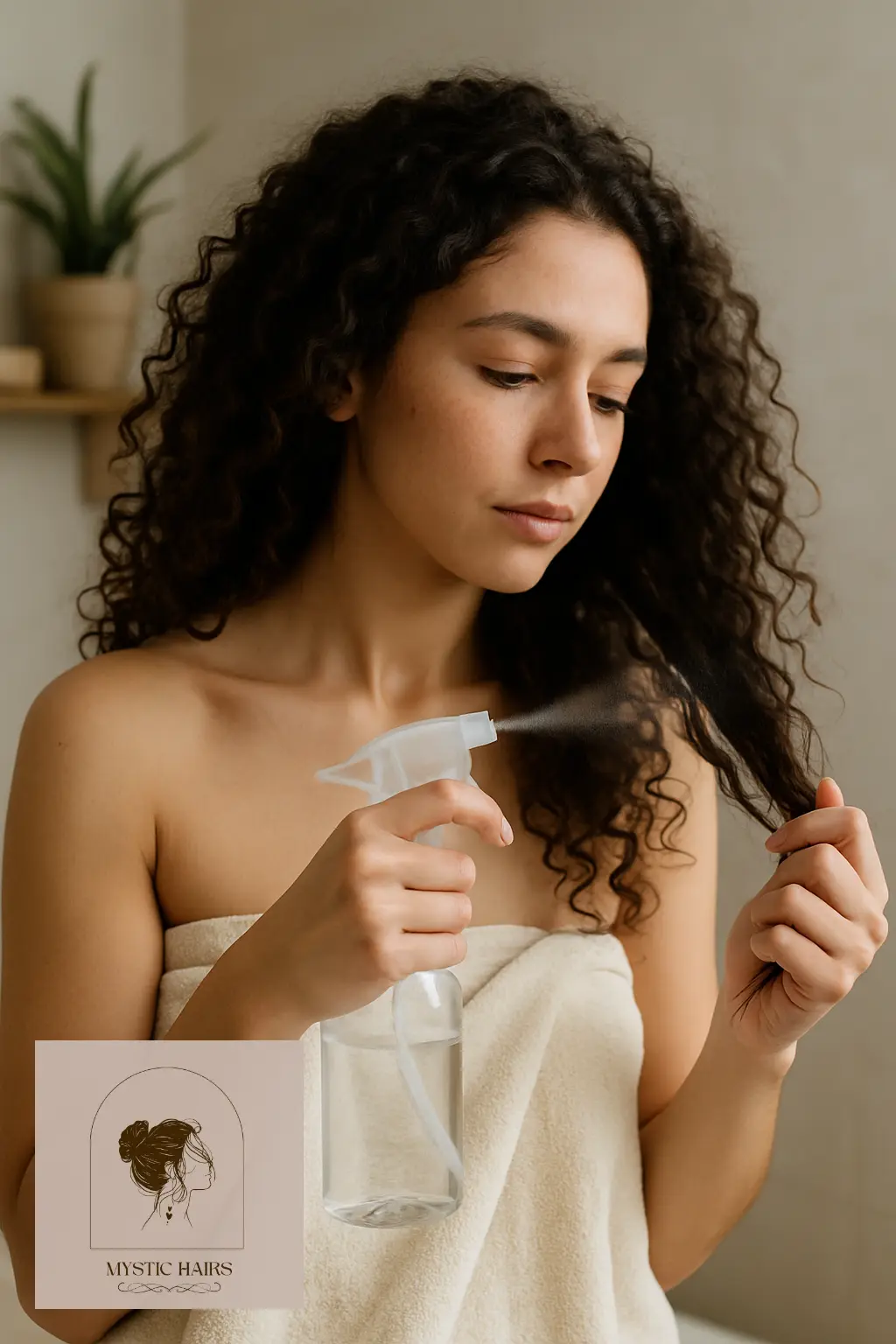
10. Be Gentle with Matted or Tightly Knotted Sections
If you encounter a severely tangled section or matting, avoid the urge to pull or force your way through. Instead, use your fingers to gently separate the strands, working slowly and patiently. Applying a generous amount of conditioner or a natural oil can soften the knot and make it easier to detangle. Sometimes, it’s best to let a knotted area sit with product for a few minutes before continuing.
The goal is to detangle curly hair without causing breakage, and tough tangles are where most damage occurs. Take your time and use a combination of finger detangling and a wide-tooth comb for these problem areas. If needed, gently snip single-strand knots with sharp hair scissors—never yank or tear your curls. This kind, methodical approach protects your strands and maintains the integrity of your curl pattern.
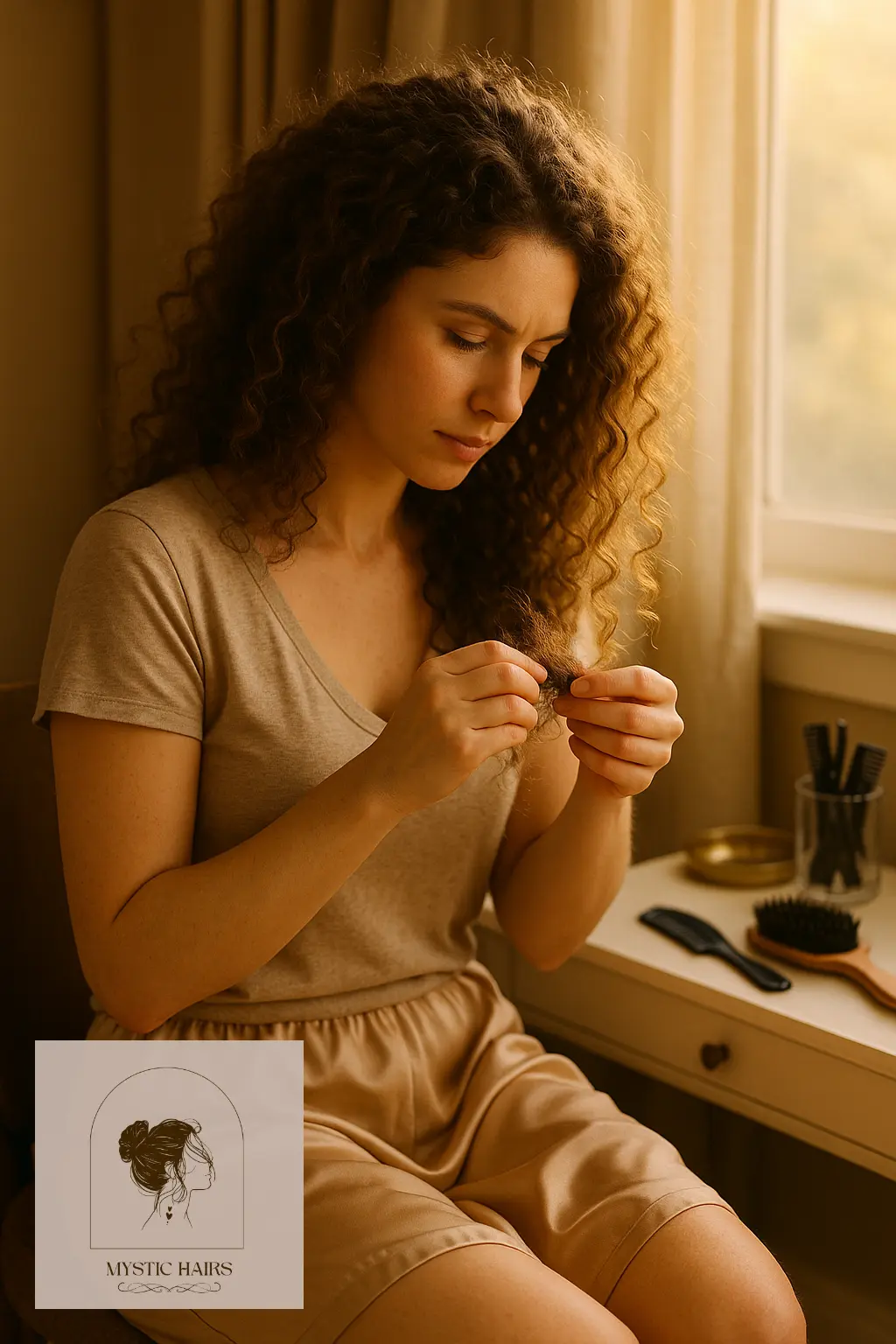
Moisture is key to preventing tangles in curls. Exploring natural ingredients for curly hair provides nourishing options that keep strands hydrated, making them more resilient against knots and breakage.
11. Finger Detangling Before Using Any Tool
Finger detangling is one of the most gentle methods for managing curly hair. By using your fingers, you can feel the tangles and carefully separate them without causing breakage. This method is especially useful for people with coils or very delicate hair strands that are prone to snapping. Before using a comb, run your fingers through each section to identify and gently work out larger knots.
This not only minimizes hair loss during the process but also helps you build a better connection with your hair’s texture and condition. For anyone learning how to detangle curly hair safely, finger detangling is an essential step. It reduces mechanical tension and allows for more control, which ultimately means healthier, stronger curls over time.
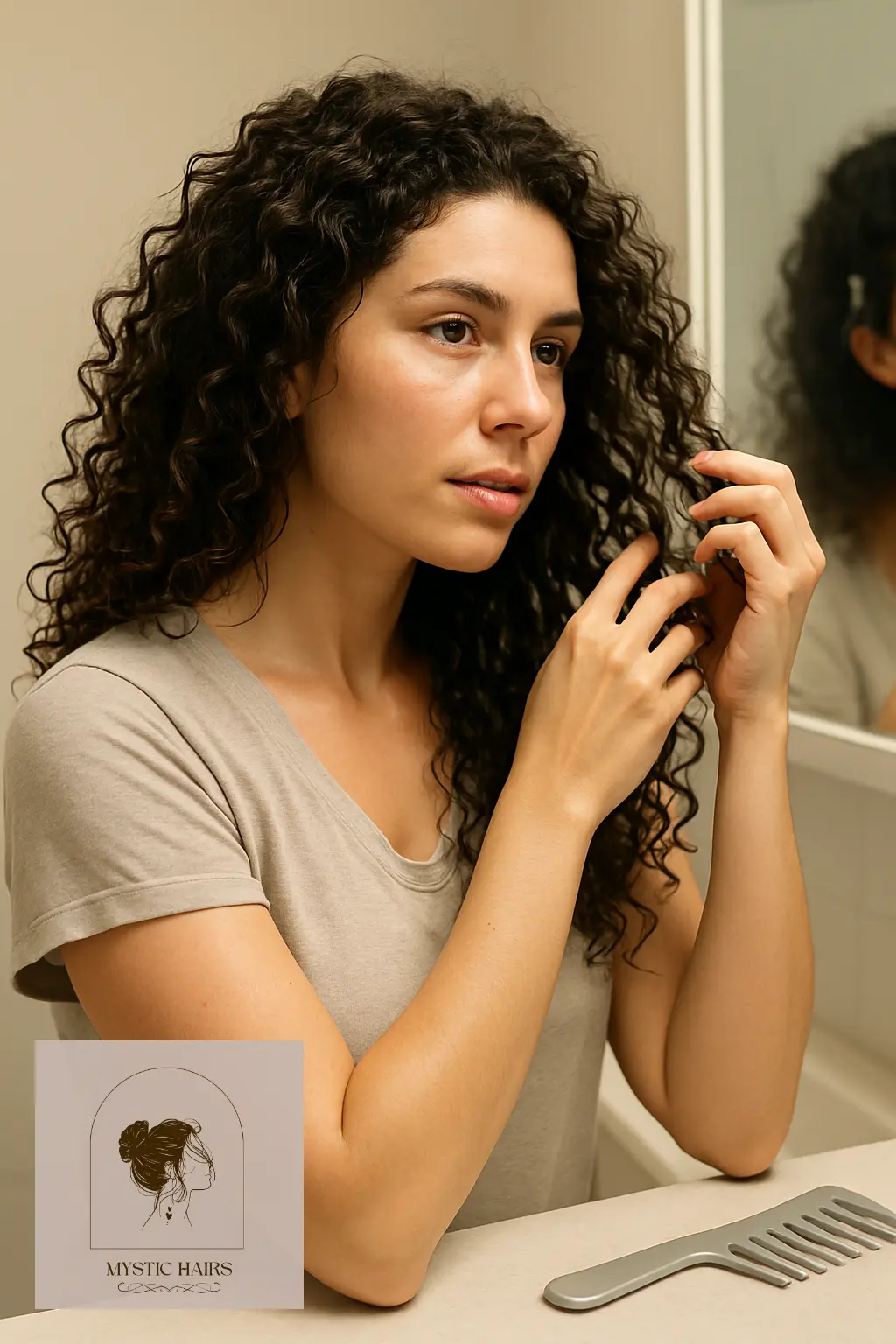
12. Detangle Hair Regularly to Prevent Buildup
One of the easiest ways to avoid severe tangling is to detangle your curly hair on a consistent schedule. Letting knots build up over days or weeks only makes the process harder and more damaging later. Whether you detangle every wash day or a few times per week depends on your hair type, but maintaining a regular routine keeps tangles under control.
Consistent detangling also helps distribute natural oils and reduce shedding buildup that can lead to matting. If you wait too long, you risk more breakage and even split ends. By including detangling as a regular part of your hair care regimen, you make it a simple, stress-free habit that contributes to long-term curl health and manageability.
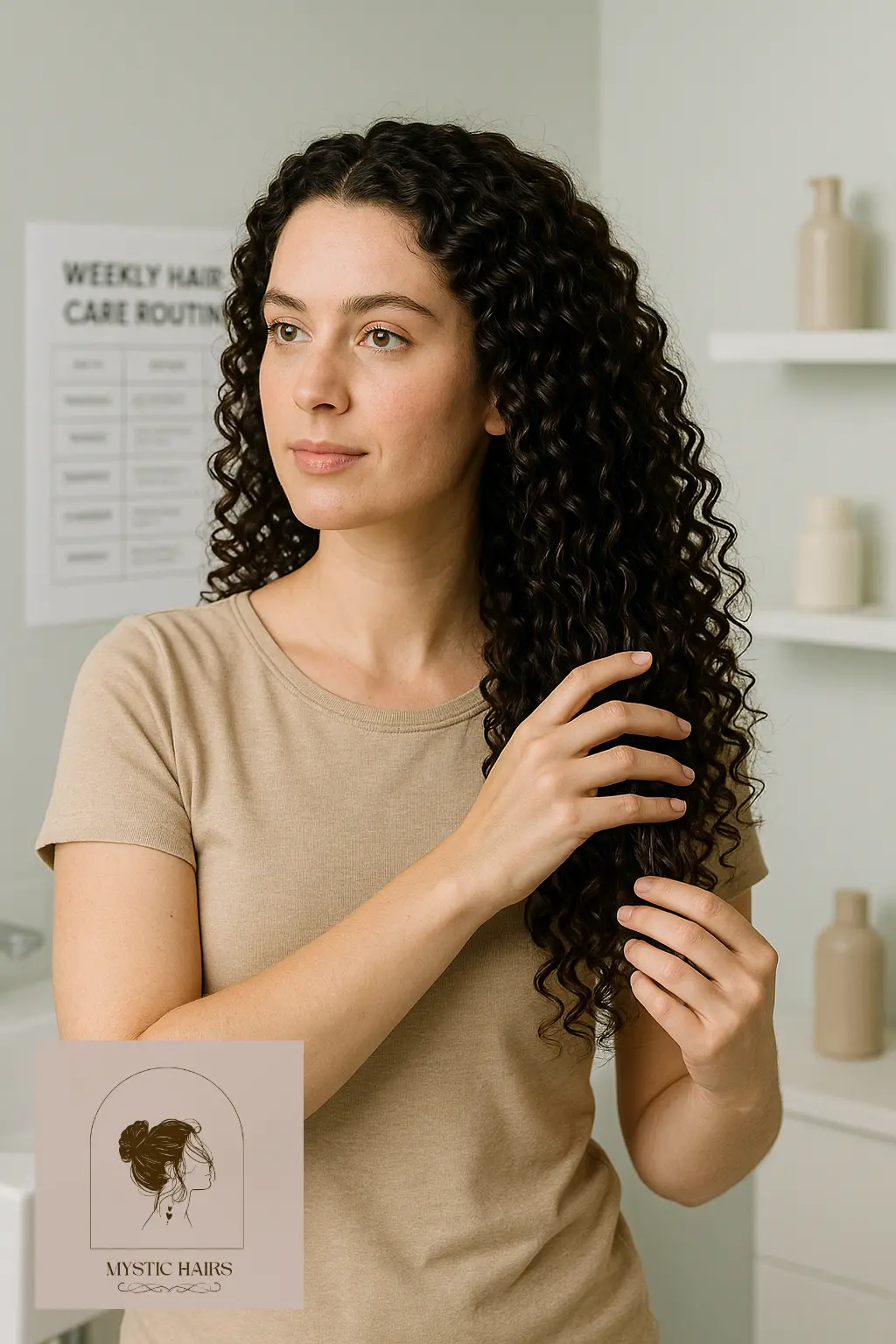
13. Protect Hair at Night to Prevent Tangles
Curly hair tends to get tangled overnight due to friction from pillowcases or tossing and turning. One of the best ways to prevent next-day detangling struggles is by protecting your curls while you sleep. You can do this by loosely braiding your hair or wearing a silk or satin bonnet or scarf to reduce friction.
These protective measures preserve your curl pattern and reduce knots, making your morning detangling routine much easier. For extra protection, use a satin pillowcase if you don’t like wearing anything on your head at night. This tip is crucial for maintaining the effort you put into detangling and keeping your curly hair soft, smooth, and manageable between wash days.
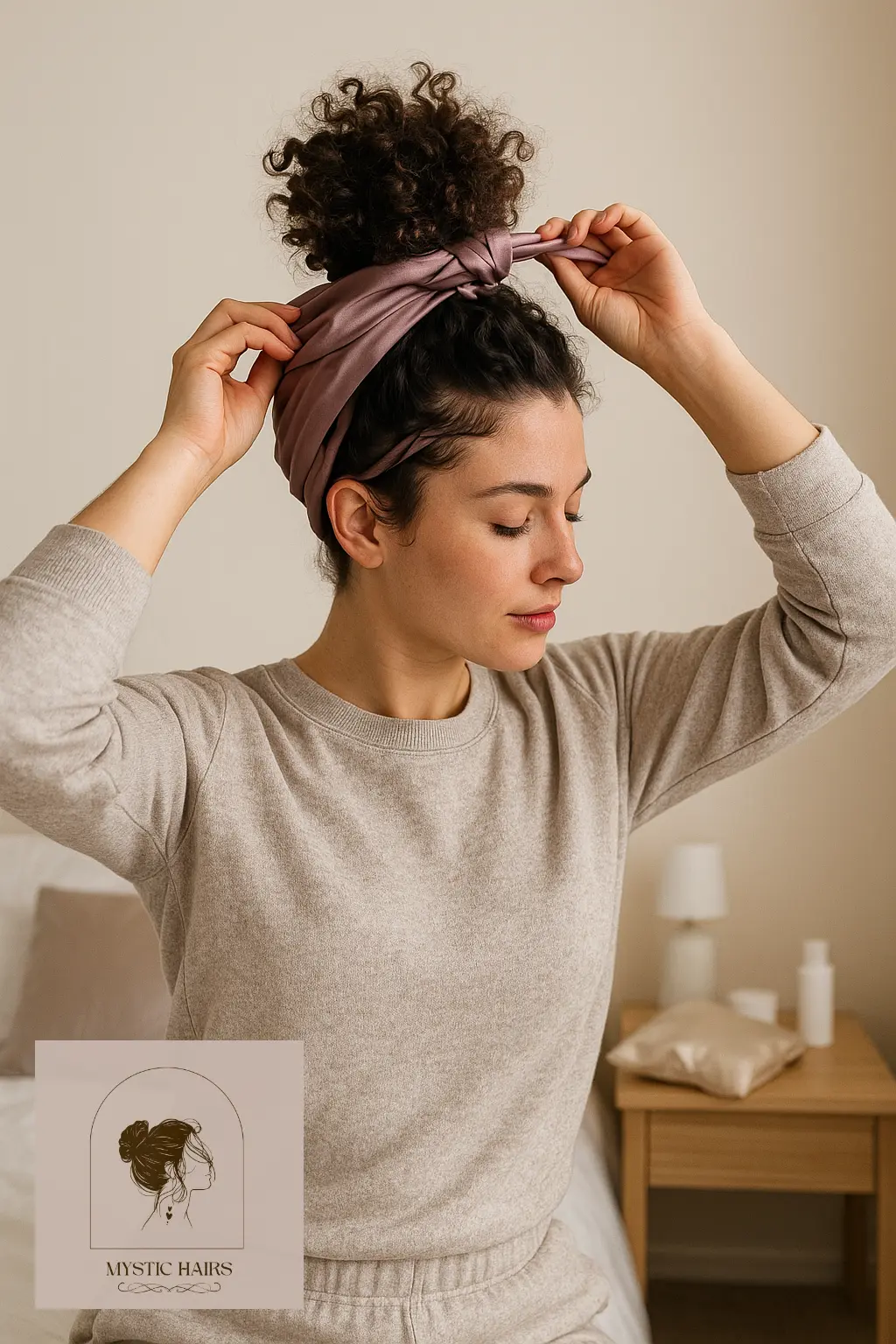
14. Avoid Heat Styling Right After Detangling
After you’ve spent time carefully detangling your curls, it’s best to avoid using direct heat tools like flat irons or blow dryers without a diffuser. Your strands are at their most vulnerable post-detangling, especially when they’re still damp. Applying high heat immediately afterward can cause stress and lead to hair breakage or loss of curl pattern.
Instead, give your curls time to air-dry or use a low-heat setting if drying is necessary. Heat-free styling methods are always gentler, and your curls will retain their bounce and moisture. This mindful approach not only helps reduce frizz but also extends the benefits of your detangling routine. Protecting your hair from unnecessary stress is key to keeping it strong and healthy.
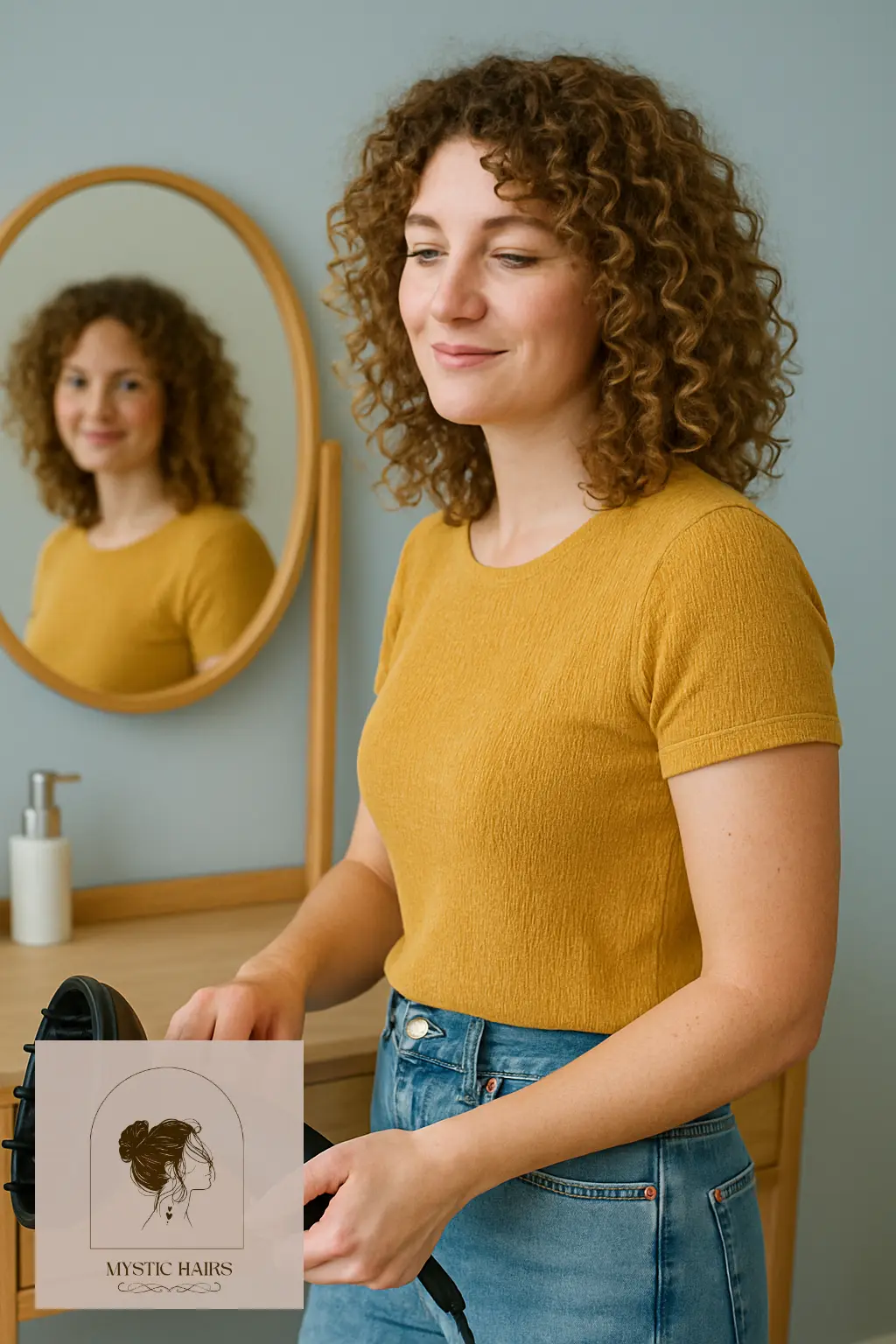
15. Be Consistent with Moisture and Care
Detangling curly hair isn’t just about technique—it’s about consistent hair care. Regular hydration, protective styling, gentle handling, and the right detangling habits all work together to maintain your curls’ health. When your hair is well-nourished and moisturized, tangles are less likely to form, and the entire detangling process becomes much smoother.
Incorporate weekly deep conditioning, avoid harsh chemicals, and treat your curls with patience. Over time, you’ll notice less frizz, improved manageability, and stronger, more defined curls. Following these tips for detangling curly hair consistently will not only make your daily routine easier but will also lead to long-term curl satisfaction and growth.
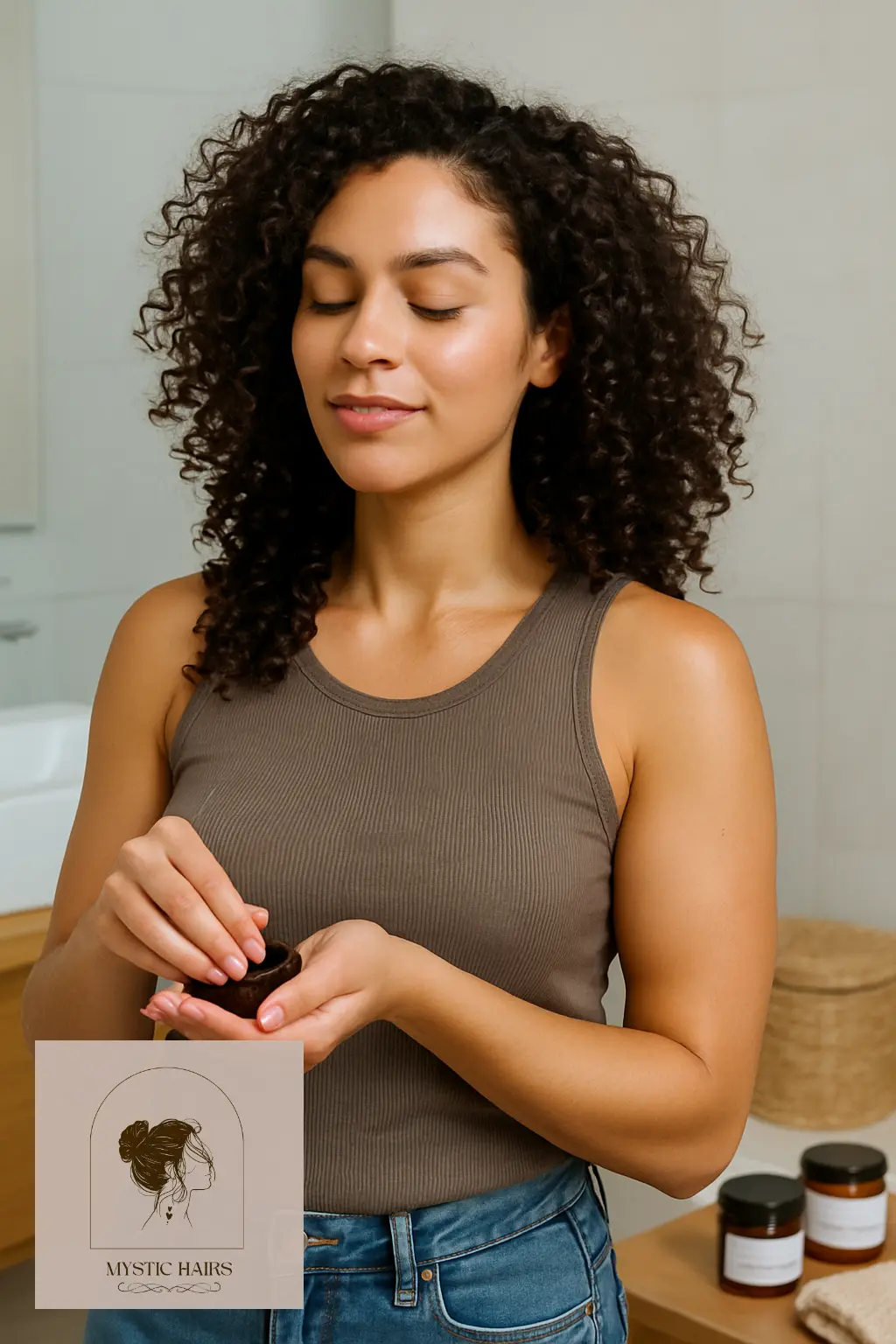
The right tool makes all the difference in a safe detangling routine. Understanding how to choose the right hair brush helps you glide through curls without pulling, protecting your natural pattern and reducing damage.
Common Mistakes to Avoid When Detangling Curly Hair
Even with the best intentions, it’s easy to fall into habits that cause more harm than good when managing tangles. One of the biggest mistakes is detangling curly hair when it’s dry. This can lead to snapping, excessive shedding, and split ends. Always ensure your hair is damp or fully wet and coated with a slippery conditioner or leave-in before attempting to detangle.
Another common error is rushing through the process or using small-toothed combs. These tools aren’t designed for curls and can lead to severe breakage. Also, starting from the roots instead of the ends can make knots worse. Gentle techniques and proper tools make a huge difference in protecting your hair’s natural curl pattern. Avoiding these common missteps will leave your curls healthier, shinier, and easier to manage over time.
Best Detangling Tools for Curly Hair
Choosing the right detangling tools is essential for maintaining the integrity of your curls. Wide-tooth combs are ideal for thick or coily hair types because they glide through without causing too much tension. They’re perfect for distributing conditioner evenly while gently removing tangles. Another excellent tool is a flexible detangling brush designed specifically for curls—it moves with the hair to minimize breakage.
Your fingers can also be one of the most effective tools for curly hair detangling. They allow for more precision and reduce the risk of ripping through knots. Additionally, a spray bottle filled with water or diluted conditioner can help rehydrate sections as you work through your curls. These tools, paired with patience and care, make the detangling process far less intimidating and much more effective.
Protective Styles That Prevent Tangling
If you’re tired of daily tangling, incorporating protective hairstyles into your routine can be a game-changer. Styles like twists, braids, buns, and pineapples keep curls stretched and reduce friction, especially during sleep or busy days. These styles help maintain moisture, reduce knots, and minimize manipulation, which is key to avoiding damage.
For curly hair types that are prone to dryness and tangling, protective styles also give strands time to rest. They’re not just convenient—they’re a strategic part of long-term curly hair care. When done correctly and not too tight, these styles can protect your ends, preserve definition, and help retain length.
Signs Your Hair Needs a Trim to Reduce Tangles
Sometimes, tangles are a sign that your hair needs more than just gentle detangling—they might be telling you it’s time for a trim. Split ends, single-strand knots, and stringy textures can cause frequent snarls that resist detangling. If you find that your detangling process is becoming harder despite regular care, it might be time to assess your ends.
Trimming every few months can prevent tangles from traveling up the shaft and causing more damage. Regular dusting or shaping also promotes curl definition and overall manageability. Keeping your ends healthy plays a crucial role in making detangling curly hair a smoother and faster experience.
Final Note
Detangling curly hair doesn’t have to be a frustrating experience. With the right tools, techniques, and mindset, it can become a healthy, stress-free part of your hair care routine. Whether you choose finger detangling, a wide-tooth comb, or sectioning methods, the key is always to be gentle and intentional. Combine consistent detangling with moisture-rich care, and your curls will thank you with definition, strength, and shine.

Aria Blake is a beauty writer and hairstyle curator passionate about empowering women through timeless trends and modern haircare. With a deep love for natural textures and creative styling, Aria blends expert tips with real-life inspiration to help you look and feel your best—every single day. When she’s not writing for MysticHairs.com, you’ll find her exploring protective styles, sipping herbal tea, or pinning dreamy looks for your next hair glow-up.



